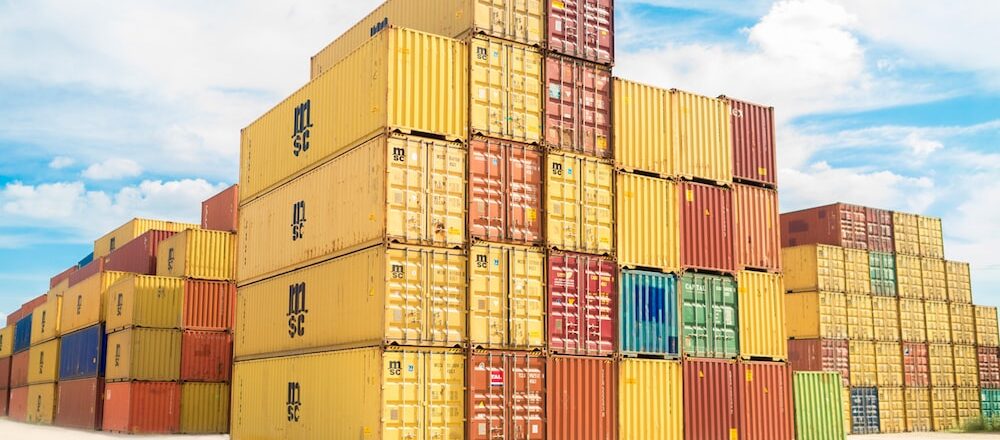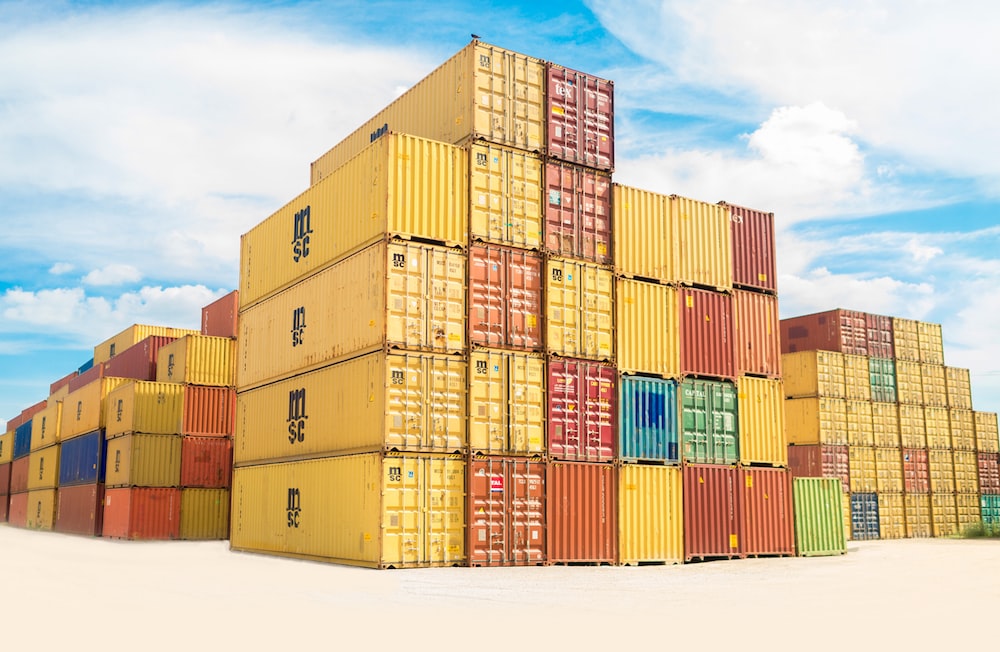Image Source: Unsplash
## Introduction
In today’s globalized economy, efficient and cost-effective transportation of goods is vital for businesses of all sizes. One method that has gained significant popularity in recent years is intermodal drayage. This innovative approach combines multiple modes of transportation, such as trucking, rail, and ocean, to move cargo seamlessly along the supply chain. In this comprehensive guide, we will explore the concept of intermodal drayage, its benefits, and how it is revolutionizing the shipping and logistics industry.
Understanding Intermodal Drayage
What is Intermodal Drayage?
Intermodal drayage refers to the process of transporting shipping containers or trailers from one mode of transportation to another over a short distance. It combines the efficiency of long-haul shipping methods with the flexibility of short-haul trucking. By utilizing various transportation modes, intermodal drayage optimizes the movement of cargo, ensuring it reaches its final destination in a timely and cost-effective manner.
The Intermodal Drayage Process
The intermodal drayage process involves several key steps:
- Origin Pickup: The cargo is collected from the originating point, such as a warehouse or distribution center, and loaded onto a truck for transportation to the intermodal terminal.
- Intermodal Terminal: At the terminal, the cargo is transferred from the truck to a railcar or another mode of transportation, depending on the distance to be covered.
- Long-Haul Transportation: The cargo is transported over long distances, typically by rail, taking advantage of the efficiency and cost-effectiveness of this mode of transportation.
- Destination Terminal: Upon reaching the destination terminal, the cargo is transferred from the railcar back onto a truck for the final leg of the journey.
- Final Delivery: The cargo is delivered to its final destination, such as a retail store or customer’s location, completing the intermodal drayage process.
Benefits of Intermodal Drayage
Intermodal drayage offers several benefits for shippers and logistics providers:
Cost Efficiency
Utilizing intermodal drayage can result in significant cost savings compared to relying solely on long-haul trucking. By leveraging rail transportation for the bulk of the distance, shippers can take advantage of lower fuel costs and reduced labor requirements. Additionally, intermodal drayage allows for greater load consolidation, maximizing the use of available container space and reducing the overall shipping costs.
Environmental Sustainability
With growing concerns about carbon emissions and environmental sustainability, intermodal drayage offers a greener alternative to traditional transportation methods. By utilizing rail and other environmentally friendly modes of transportation, intermodal drayage reduces carbon emissions and contributes to a more sustainable supply chain.
Improved Efficiency and Reliability
Intermodal drayage enables the seamless movement of cargo from one mode of transportation to another, reducing handling and minimizing the risk of damage or loss. The use of standardized shipping containers also streamlines the process, making it easier to track and manage shipments. Additionally, intermodal drayage can help mitigate the impact of external factors such as traffic congestion or driver shortages, ensuring timely delivery of goods.
Choosing Intermodal Drayage Services
When selecting an intermodal drayage provider, it is crucial to consider several factors:
Experience and Expertise
Look for a provider with extensive experience in intermodal drayage and a solid track record of delivering reliable and efficient services. A company with a deep understanding of the industry, including regulatory requirements and best practices, can ensure a smooth and hassle-free shipping experience.
Network and Infrastructure
Consider the provider’s network and infrastructure. Do they have a wide coverage area that aligns with your shipping needs? Are their terminals strategically located to optimize transit times? A well-established network and robust infrastructure are essential for seamless intermodal drayage operations.
Technology and Visibility
Choose a provider that leverages advanced technology to provide real-time visibility into your shipments. This includes features such as online tracking, electronic documentation, and automated notifications. Enhanced visibility allows you to monitor the progress of your shipments and proactively address any potential issues.
Customer Service
Excellent customer service is crucial when selecting an intermodal drayage provider. Look for a company that is responsive, transparent, and committed to meeting your specific needs. A dedicated customer service team can provide personalized support, address any concerns promptly, and ensure a positive shipping experience.
Conclusion
Intermodal drayage is revolutionizing the shipping and logistics industry by offering a more efficient, cost-effective, and sustainable approach to moving cargo. By combining multiple modes of transportation and optimizing the supply chain, intermodal drayage enables businesses to streamline their operations, reduce costs, and minimize their environmental impact. When choosing an intermodal drayage provider, consider factors such as experience, network coverage, technology, and customer service to ensure a smooth and successful shipping experience. Embrace the power of intermodal drayage and unlock the full potential of your supply chain.




